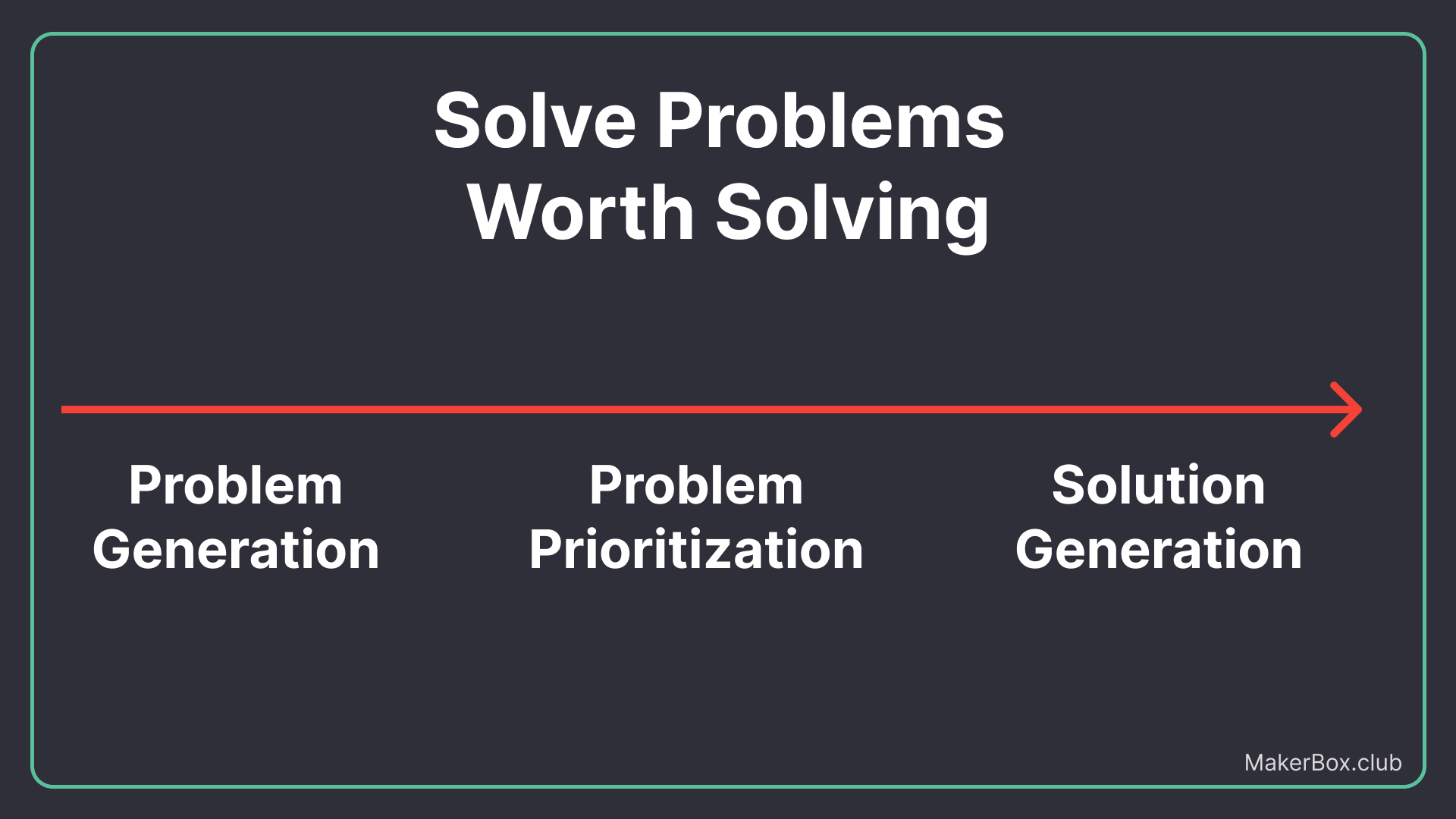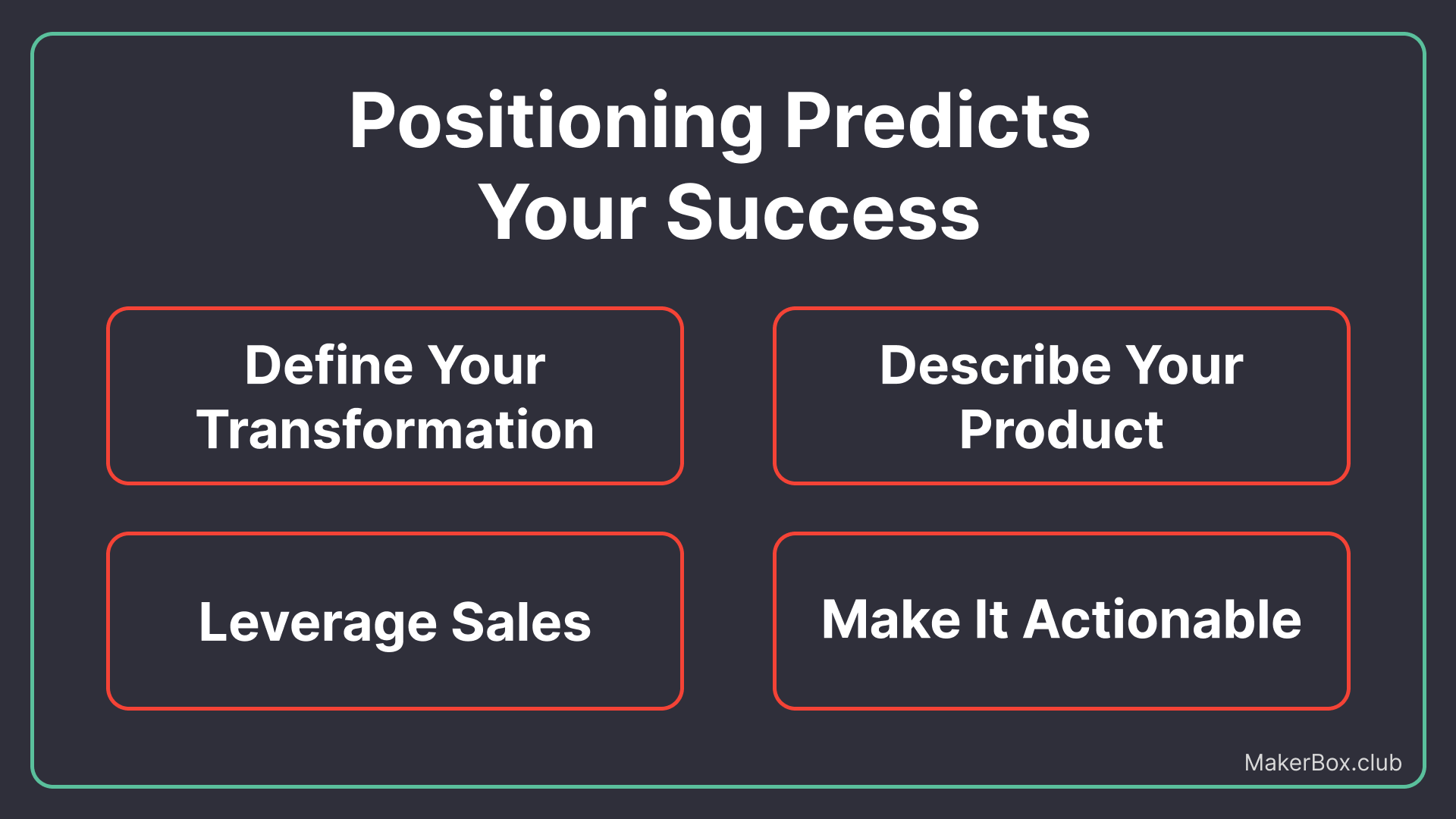The 8-step product launch system that generated $39,231 in 7 months
Below is a guest post from Sveta Bay, Co-Founder of MakerBox. In July 2022, she quit her job and started her Indie Entrepreneurship journey. In just seven months, she has launched 5 paid products, got 2,500 happy customers, and grown her Twitter audience from 0 to 8,000.
In MakerBox, she and Dan are creating actionable marketing resources to help solopreneurs build a profitable business with clarity.
Everybody is saying “start a side hustle”, but no one is showing how.
Today I’ll share our 8-step system so you can launch your first content product in 2023. It works with everything: courses, playbooks, e-books, lists, cheat sheets, and templates.
And the best part. If you launch a successful content product, you can build SaaS around it.
1. Find problems people dream of solving
The most common mistake is to start with ideas, not with problems.
Hard truth: if a product doesn’t solve any problem, users don’t need it.
Here’s a simple framework to find problems worth solving.

a) Generate problems. Brainstorm as many problems as you can. Start with your personal experience, talk with your friends and colleagues, and search for complaints in reviews. Your target is to have at least 15 problems.
b) Prioritize Problems. Place on the top the most painful problems that you want to solve. You don’t want to build Vitamin products or suffer while building.
c) Generate 3-5 possible solutions. Brainstorm different methods to solve the problem. Keep it simple - MVP of these solutions could be done in 1 month.
Now you have a problem to solve and solution ideas. Time to b̶u̶i̶l̶d̶ learn more about the target audience and competitors. Check MakerBox Frameworks for more frameworks like that.
👉 Related case study: Learn how Matt turned a personal problem (hairy back) into a $7M/year business.
2. Understand everything about your target audience and competitors
It’s time for market research.
Skip this step if you want to spend months building a product nobody needs.
Here’re 2 musts:
1) Analyze your target audience. Pick the most accurate segment of your target audience. Find 10-15 respondents within it and conduct interviews or do a survey. As a result, create one persona - a visualization of your ideal customer.
2) Analyze your competitors. Pick one nemesis - your key competitor. Analyze its marketing funnel and find complaints in customer reviews (G2, Capterra, Twitter). As a result, you’ll understand the strong and weak spots of the current solution.
You know the potential customers and their current problem solution. Let’s apply this knowledge to your product.
👉 Related case study: Picking the right niche audience took this side hustle to thousands of dollars per year.
3. Create a positioning that sells
Positioning is the most important part of your marketing. It influences all your future marketing activities. So, spend 1 hour defining your positioning based on the research from step 2.

a) Define your transformation. You know your target audience’s stage A. Define stage B and how they’ll reach it with your product.
b) Describe your product. Connect the transformation with your product’s features. Show how they will help reach stage B.
c) Leverage sales. Define your offer - transform your positioning into a call-to-action format.
d) Make it Actionable. Have one living document for positioning and align all your marketing activities with it.
Internal marketing is done; time to spread the word about your product.
4. Tell people about your idea
Before you build, test the demand. Even proper marketing research can lead to wrong conclusions. Testing the demand will be the final proof.
1) If you don’t have an audience, make a waitlist. It's a one-screen landing page with your offer and an e-mail collection form. Share it on Indie Hackers, Twitter, Product Hunt discussions, and Polywork.
2) If you already have an audience, make an early bird option with a 50-70% discount. It’s the same simple landing page, but with a pricing section and the ability to pay.
If people don’t register on a waitlist or buy the early bird option, it’s a sign that something is wrong. It may be your product or its positioning.
👉 Related case study: These $6M/year app founders knew they were onto something when 50K+ people registered to their waitlist in 2 months.
5. Warm up your audience
Finally, there’s a green light to build the product. But don’t forget to warm up your audience with expert content. Overwise, they won’t be ready to buy. Here’s how:
a) Build in Public. Share your progress and ask for advice. In return, get useful tips and support. Use the #buildinpublic hashtag.
b) Introduce new content topics. Remember that you need to be an expert. Share more content about your product’s field.
c) Make a free giveaway. Important notice - don’t give your product for free. Give a part of it or a related content freebie.
These 3 ideas will warm up and engage your audience. They won’t be surprised by your paid product.
👉 Related case study: Thanks to building in public, this solo founder was able to land his first customers after just one launch tweet.
6. Leverage user feedback to supercharge your launch
You built a product and made a landing page. Time to launch?
Not yet. And here’s why.
You need to make sure that your product and landing page are ready for the big launch. Time to do beta tests.

1) Share your product with beta-testers from your target audience → get feedback and testimonials for your landing page.
2) Share your landing page to get feedback on it. You can use Twitter, Indie Hackers, Polywork, or MakerBox Roasting. Remember that a bad landing page can ruin your launch.
It’s finally time to launch!
👉 Related case study: Being obsessed with customer feedback propelled this SaaS to $2M/year.
7. Make some noise by launching your product everywhere
The best tip here is not to stop on Product Hunt. Here’re 8 more ways to feature your product.

Launch on Product Hunt (here’s our guide to successfully do it) and Beta-List in the first place, and then spread the word about these launches on other platforms.
👉 Related case study: This SaaS nailed its launch strategy and hit $400K/year in just 4 months.
8. Grow your product to get new sales every day
The launch will boost website visitors, but it will last for one week. So, don’t forget to move further to create consistent cash flow. You can focus on:
a) Getting more visitors
b) Improving the offer
We made a marketing WorkBook with 100 actionable ideas and step-by-step guides. So that you know exactly what to do in your next marketing week.
Conclusion
Here is the secret. You don’t need to wait for a million-dollar idea.
Find the problem and use our 8-step launch system to build a profitable business. If it’s growing well — stick around. If not, go to step 1.
As a final proof of this system's efficiency, I’ll share MakerBox stats:
- MakerBox WorkBook - $12,900. Launched in September 2022.
- MakerBox Frameworks - $10,021. Launched in July 2022.
- Sponsor This Newsletter - $5,476. Launched in October 2022.
- MakerBox Tools - $5,244. Launched in June 2022.
- MakerBox Roasting - $3,899. Launched in August 2022.

Download the report and join our email newsletter packed with business ideas and money-making opportunities, backed by real-life case studies.

Download the report and join our email newsletter packed with business ideas and money-making opportunities, backed by real-life case studies.

Download the report and join our email newsletter packed with business ideas and money-making opportunities, backed by real-life case studies.

Download the report and join our email newsletter packed with business ideas and money-making opportunities, backed by real-life case studies.

Download the report and join our email newsletter packed with business ideas and money-making opportunities, backed by real-life case studies.

Download the report and join our email newsletter packed with business ideas and money-making opportunities, backed by real-life case studies.

Download the report and join our email newsletter packed with business ideas and money-making opportunities, backed by real-life case studies.

Download the report and join our email newsletter packed with business ideas and money-making opportunities, backed by real-life case studies.








